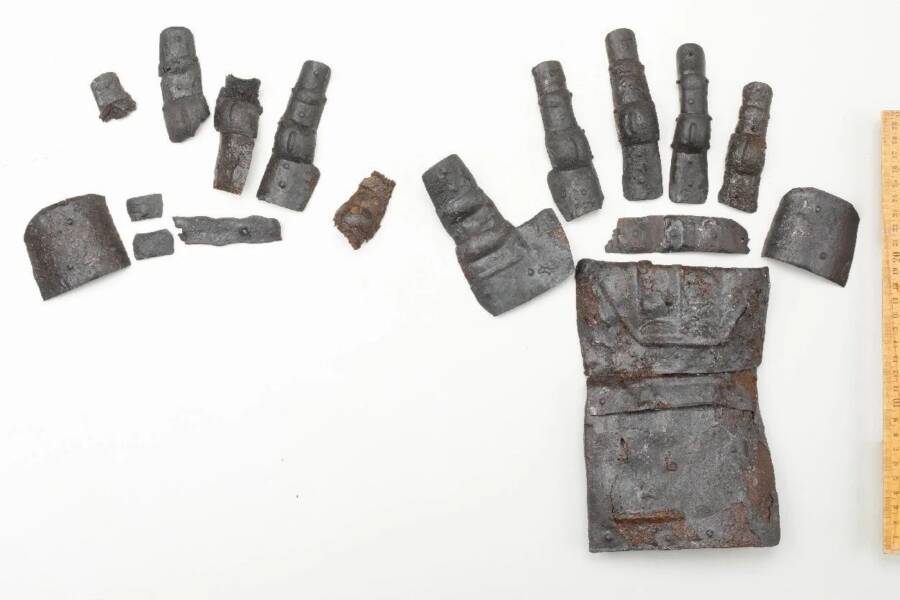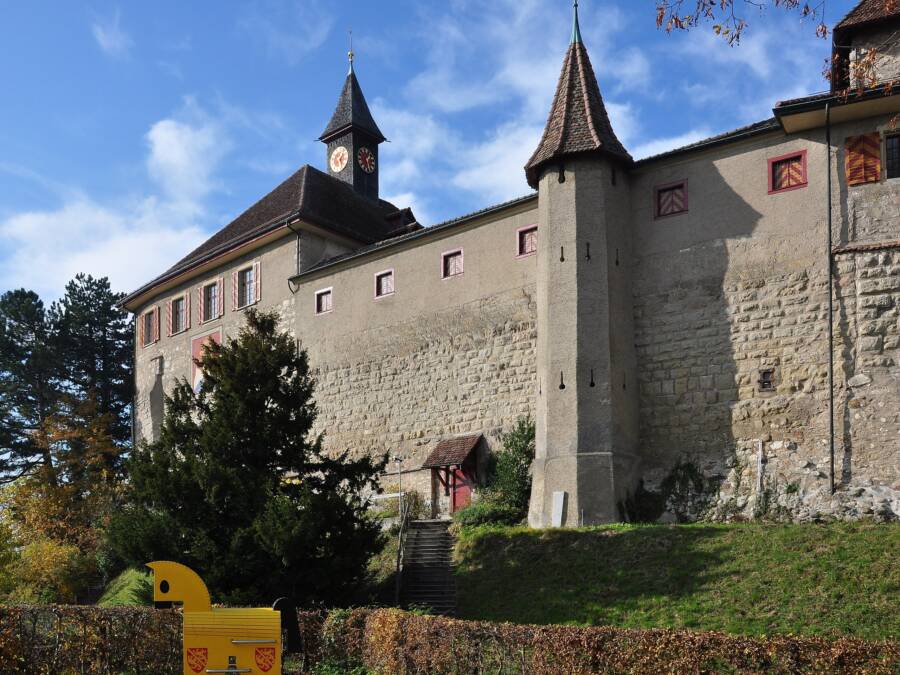Only five 14th-century gauntlets have been discovered in Switzerland, but this one is by far the best preserved.

Canton of ZurichArchaeologists found a rare intact medieval gauntlet for the right hand.
Hundreds of years ago, someone in Switzerland threw down their gauntlet. Now, archaeologists excavating a site near Kyburg Castle in Pfäffikon, Switzerland have found it — in surprisingly good condition.
“The previously known gauntlets from museums and collections mostly date back to the 15th century at the earliest. Older examples from the 14th century, however, are extremely rare,” the Canton of Zurich announced in a press release about the find. “So far, only five other gauntlets from this period have been found during archaeological excavations in Switzerland, although none of these pieces is anywhere near as well preserved and shows as many details of design and decoration as the Kyburg gauntlet.”
The gauntlet, meant for the right hand and wrist, is about 14 inches long. It’s made of individual iron plates that lay atop each other like scales and are held together with side rivets. Hundreds of years ago, the gauntlet would have been affixed to some kind of pliable material like leather. Whoever wore it would have had the flexibility to make a fist or hold a sword.
“The discovery is sensational due to its age and condition,” Lorena Burkhardt, the project leader, noted of the gauntlet, according to The Jerusalem Post.
Archaeologists also found the left-hand gauntlet, but this one is in far worse condition. Unlike the right-hand glove, which is well preserved, the left-hand one has largely broken apart. Only a few pieces of its fingers remain.

Canton of ZurichArchaeologists found this pair of gauntlets, but only the right-hand one is in good condition.
And that’s not all they found at Kyburg Castle.
In addition, The Jerusalem Post reports that archaeologists came across a medieval weaving cellar, destroyed by a fire sometime in the 14th-century, that contained three looms. Nearby, they also found a blacksmith’s forge that contained a number of metal objects. These included hammers, keys, hinges, a writing tool, a hand drill, and bullet points.
Kyburg Castle first appeared in the historic record in 1027 as “Chuigeburg.” This translates to “cows-fort” and suggests that the fortification was originally used as a place for livestock.
It was probably constructed during the 10th century, and its immediate history was one of destruction and revival. After being destroyed around 1028-1030, it was rebuilt and became the center of the county of Kyburg.
Today, it’s considered one of the most expansive medieval castles in all of Switzerland. And because its defensive walls once stretched beyond the village of Kyburg, it’s also a site of historical importance. Any construction in the village requires an archaeological examination first.

Roland zh/Wikimedia CommonsKyburg Castle is one of the most expansive medieval castles in Switzerland, and the site of significant archaeological interest.
The gauntlet makes up one small and fascinating part of Kyburg Castle’s history, but the discovery raises questions, too.
As archaeologists noted, just five 14th-century gauntlets have been found in Switzerland. Experts aren’t sure why so few have been discovered, though it’s possible that they were melted down. Likewise, archaeologists aren’t sure who the recently discovered gauntlet may have once belonged to.
Their identity remains a mystery. But their gauntlet is certainly evocative of a long-ago era, one of castles and swords, which archaeologists hope to learn more about as they excavate sites near Kyburg Castle.
After reading about the well-preserved 14th-century gauntlet discovered in Switzerland, discover the remarkable story of the Bronze-Age prosthetic hand discovered in Switzerland. Or, learn about the chest of stolen Nazi silver that was discovered at a 14th-century Polish castle.





